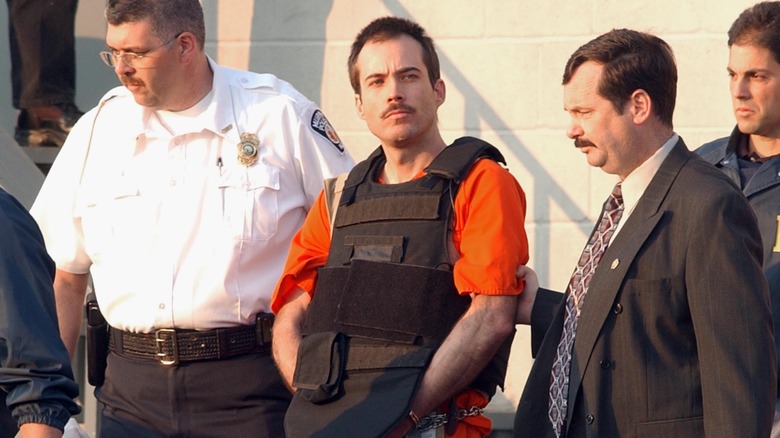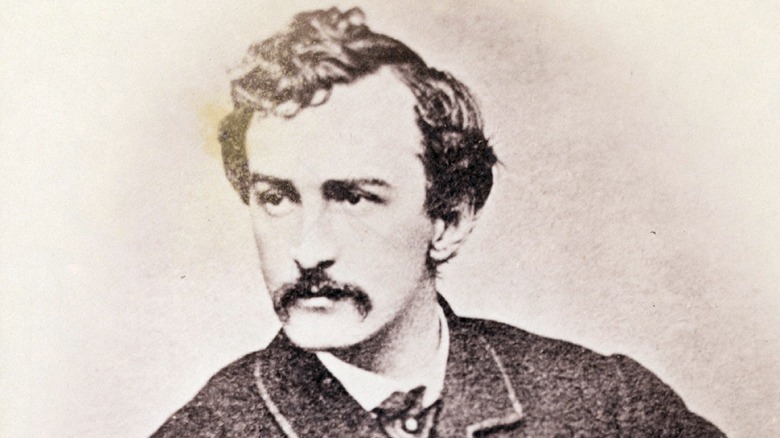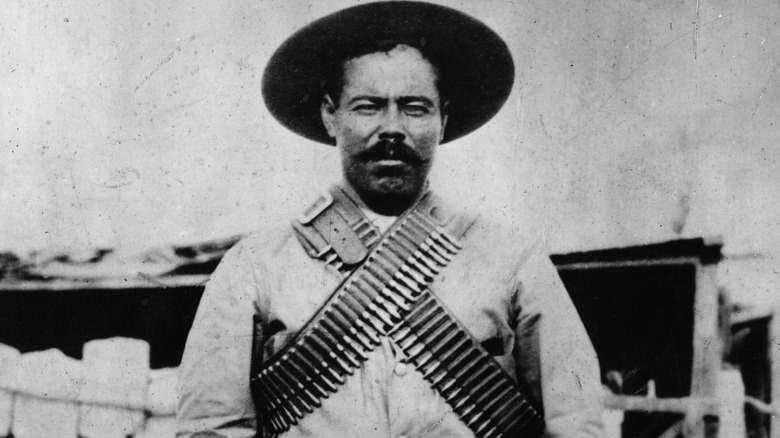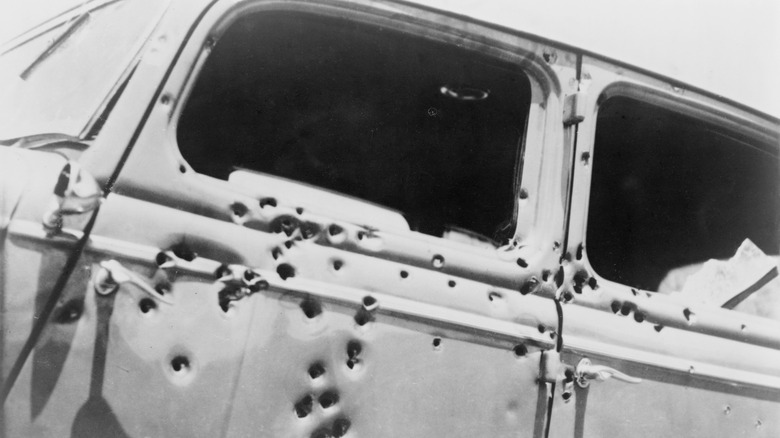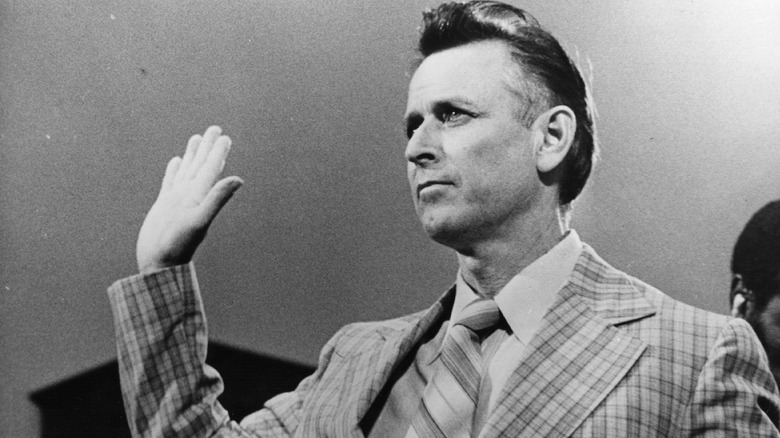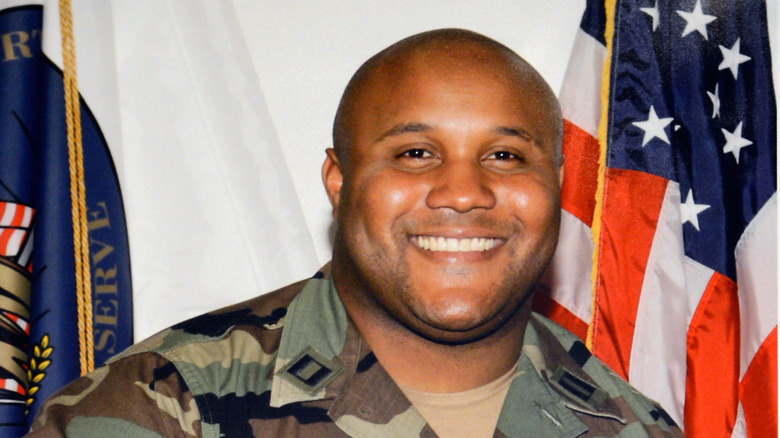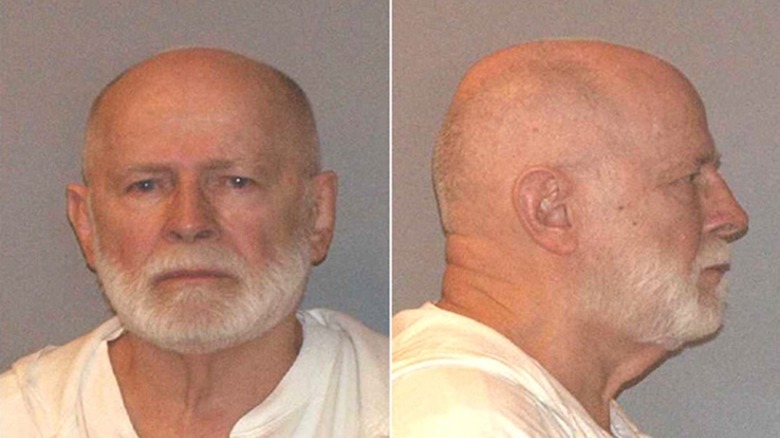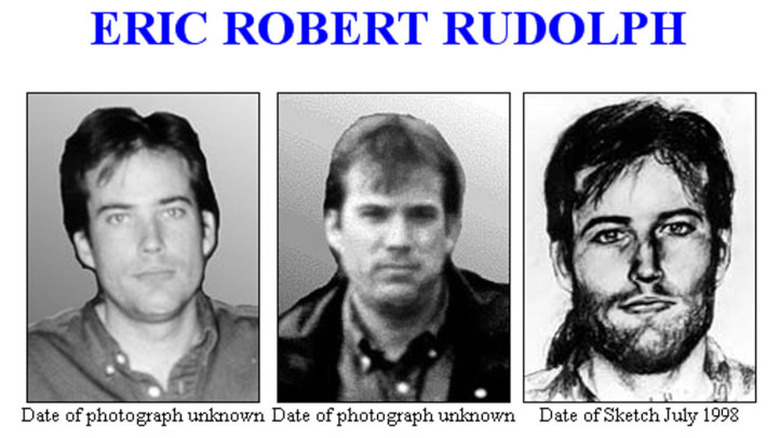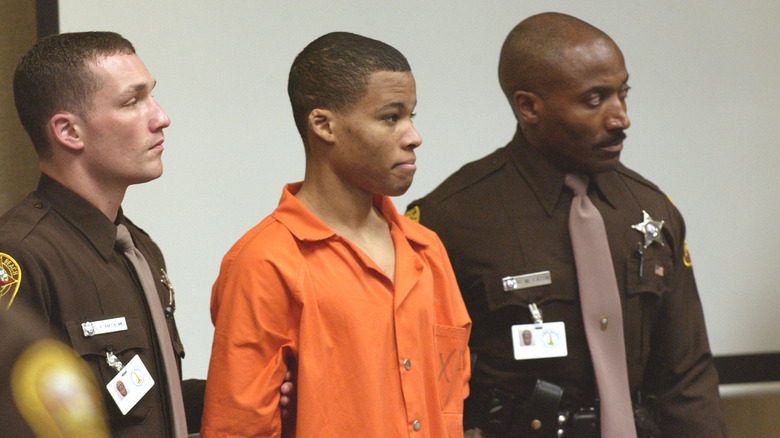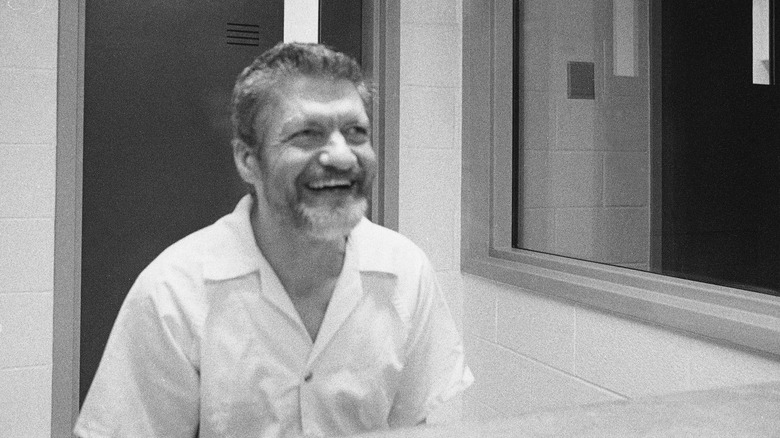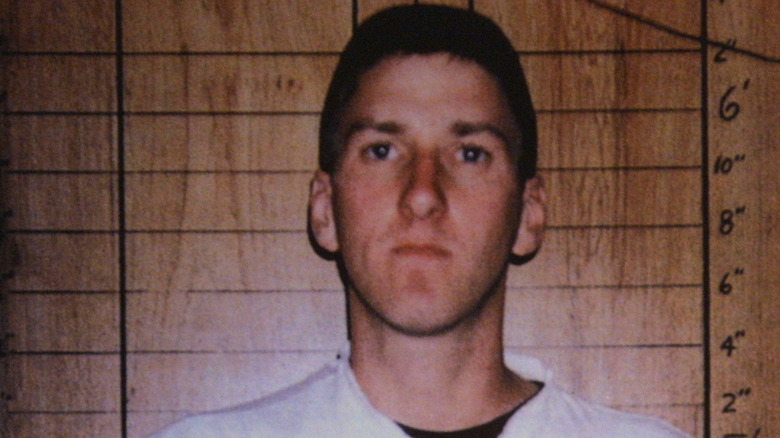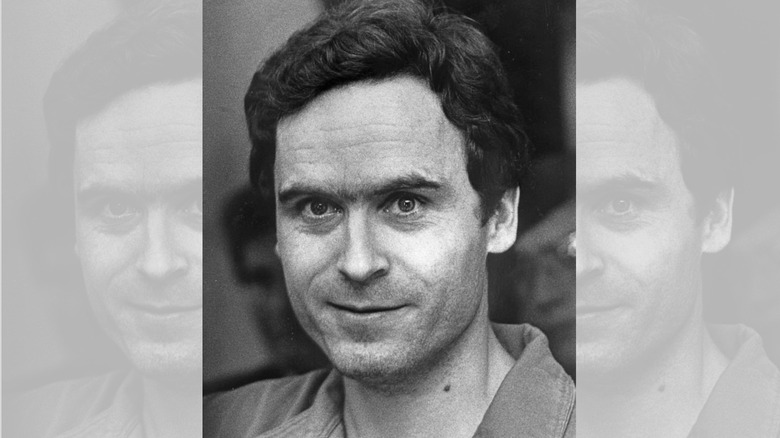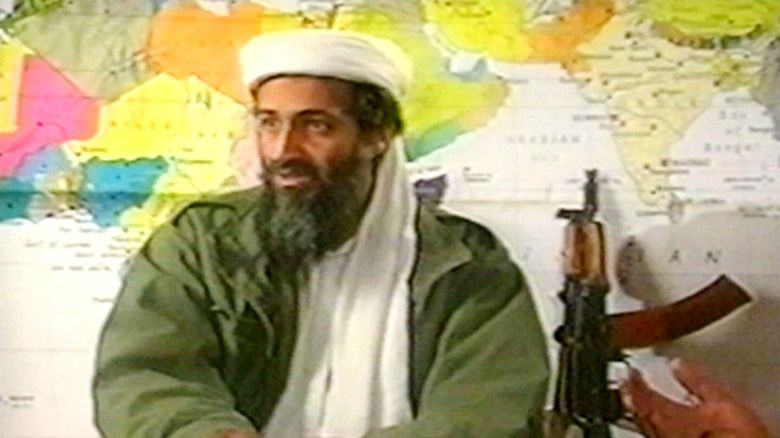The Most Famous Manhunts In American History
Manhunts are inherently dramatic — a whole region mobilizing to track down an evildoer, often with the clock ticking, can't be anything but dramatic. Throughout history, manhunts have largely been the province of the military, as victorious armies pursued defeated generals and kings in order to capture or execute them and prevent any attempts at regrouping. But as civilization entered the modern age, manhunts conducted by law enforcement became more common, usually involving police departments or state and federal law enforcement agencies working together across a wide swath of territory, often with roads and other forms of access closely monitored or even shut down.
Many manhunts are over within a short period of time. But they can also stretch on for years, regularly fading in and out of the public consciousness as new developments slowly emerge. While any manhunt is serious business involving an urgent need to protect the public at large, some manhunts from U.S. history have been permanently etched into the public imagination. These searches involved extremely dangerous criminals and immense amounts of public resources, and they're memorably enshrined in the country's annals. Here are the most famous manhunts in American history.
John Wilkes Booth: Sic semper tyrannis
Most students of American history know that John Wilkes Booth assassinated President Abraham Lincoln on April 14, 1865, while Lincoln was enjoying a play at Ford's Theater in Washington, D.C. As noted by History Collection, Booth was immediately identified as the assassin — after shooting Lincoln, he leaped down from the balcony and mounted the stage, where he turned to the audience and reportedly shouted, "Sic semper tyrannis!" ("Thus always to tyrants!") while brandishing the murder weapon.
History reports that Booth was a prominent actor at the time. Moments after the crime, he was known to be the killer, yet despite that, and the fact that he broke his leg in the jump, he remained at large for 13 days, according to Atlas Obscura. Remarkably, he was even stopped by a guard at the Navy Yard Bridge but was allowed to pass. He hooked up with one of his co-conspirators, David Herold, and the pair traveled to Surrattsville, Maryland.
By the next day, more than 1,000 soldiers were searching for Booth and Herold, and a reward totaling $100,000 had been posted. The duo hid in the wilderness, sometimes literally watching search parties pass by. They made their way into Virginia and posed as war veterans while hiding on a tobacco farm. When a tip led troops to them, Booth refused to surrender, so the soldiers set fire to the barn he was hiding in. When he fled the flames, he was shot to death on the spot.
Francisco 'Pancho' Villa: Manhunt or invasion?
An invasion is generally defined as the military force of a country crossing a border into another nation without permission. So when U.S. General John Pershing, leading a force that History Central reports was 6,000 strong, penetrated more than 350 miles into Mexico in 1916, the line between manhunt and act of war got real blurry.
Not that Francisco "Pancho" Villa didn't bring it on himself. As reported by The Washington Post, after supporting a successful counter-revolution in Mexico, Villa found himself at odds with the new government. After a crushing defeat, a desperate Villa marched raiders into the United States and attacked Columbus, New Mexico, killing 19 Americans and setting the town on fire.
President Woodrow Wilson ordered Pershing to lead a "punitive expedition" to bring Pancho Villa to justice. Less than a week later, Pershing crossed the border into Mexico — an action that many historians believe Villa wanted all along, in hopes of tipping the balance of power.
It worked. According to History, after Mexican forces attacked Pershing's troops, the United States recalled the general. This was done in part as a response to the Zimmermann Telegram, an offer from Germany to support Mexico if it attacked the U.S. and distracted the nation from World War I. Once this ploy was made public, Wilson reassigned Pershing's forces and sent them to Europe to fight Germany.
Pancho Villa lived to fight another day, and eventually he won a pardon from the Mexican government. But he was assassinated in 1923.
Bonnie and Clyde: The O.G.s
Their names have become shorthand for "criminal couple," they were folk heroes in their time, and a Hollywood film starring Warren Beatty and Faye Dunaway made them into icons, but it's important to remember what Clyde Barrow and Bonnie Parker really were: monsters. According to the Federal Bureau of Investigation, Bonnie and Clyde killed a total of 13 people while committing a variety of crimes, including kidnapping and bank robbery, and generally with zero regard for the lives of anyone who got in their way.
Their vicious spree spanned 1932 through 1934, the height of the Great Depression, when many Americans had little sympathy for banks. Parker and Barrow were in and out of jail several times before 1932 — but after Parker was released from jail that year, the duo assembled a gang of accomplices and launched a violent crime wave across five states.
According to History, after the gang sprung one of its members from a Texas prison — using machine guns and killing one guard — a retired Texas Ranger named Captain Frank Hamer was hired to track them down. The manhunt lasted three months. Hamer finally got a tip that Barrow and Parker were headed to Louisiana. He had his men hide in bushes along a road that Bonnie and Clyde were likely to use. When they appeared, the hunters opened fire, killing the couple immediately.
James Earl Ray: A worldwide manhunt
One of the most infamous moments in American history — the assassination of Dr. Martin Luther King Jr., on April 4, 1968 — didn't result in much of an ID mystery. As noted by History, there was plenty of evidence pointing to James Earl Ray, a small-time criminal who had escaped from prison the year before. From a bathroom window across the street from the Lorraine Motel in Memphis, Ray had aimed a rifle at King, who was standing on a balcony, and shot him dead. Incredibly, PBS reported, Ray walked to the street, saw a parked police car, and panicked, dropping everything he was carrying. Yet even though the police had established a perimeter in the area within four minutes of the shooting, Ray escaped.
The ensuing manhunt was massive. According to History Daily, Ray initially intended to drive to New Orleans, but after listening to details of the search organized to find him, he changed his mind and headed to Canada. Once across the border, Ray obtained false passports and managed to book a flight to London.
Nearly two months went by without any concrete leads, but the FBI knew Ray had used a fake passport, and quickly identified several names under which he might be traveling. When Ray showed up at London's Heathrow Airport for a flight to Belgium, an alert customs officer noticed he had two passports. Ray was pulled out of line and arrested.
Christopher Dorner: The vendetta
Christopher Dorner was a veteran of the U.S. Navy and a former police officer when he launched what BBC News described as a "vendetta" against his ex-peers in the Los Angeles Police Department in 2013. As noted by Mel Magazine, this wasn't speculation: Dorner had posted a lengthy manifesto on social media, detailing his outrage after being booted from the police force. An internal investigation had found he falsified a complaint by claiming his training officer had physically abused a homeless man. Dorner was convinced he was a victim of racism — and he launched a bloody murder spree to get revenge.
Over the course of nine days in late January and early February 2013, Dorner killed four people — two law enforcement officers, the daughter of a retired police captain, and her fiance — and wounded three more officers. The manhunt for him was enormous — and poorly run. As reported by The Sun, Los Angeles Police officers were jittery as they sensed they were under attack, resulting in breakdowns in communication and discipline. Per CNN, this led to a terrifying incident when eight officers fired more than 100 rounds at three people who were not involved with Dorner in any way.
Dorner was eventually tracked to a remote cabin at Big Bear Ski Resort. There he engaged in a shootout with police, who ended up causing a fire with pyrotechnic tear-gas canisters. Dorner's body was found in the charred ruins of the cabin. He had shot himself in the head.
Whitey Bulger: The good life
James "Whitey" Bulger, according to History, ran an organized-crime empire for decades without fear of consequences — in large part because he was an FBI informant for much of that time. As noted by Britannica, Bulger's FBI handler was lured over to his side, and Bulger began using the FBI as a source of information and protection that allowed him to operate with near-impunity. That all changed in 1995, according to The New York Times, because Bulger's handler warned him that he was about to be arrested — so in December 1994, Bulger ran.
The FBI launched an international manhunt but failed to come up with any leads, and Bulger managed to remain free for 16 years. He settled in California with his girlfriend, Catherine Greig, and lived openly under an assumed name. In 2011, the FBI changed tactics, focusing on Greig, and targeting a female audience who might have encountered her at beauty salons or plastic-surgery offices. The tactic paid off, and Whitey Bulger was finally arrested in 2011.
Bulger was suspected in 19 murders. BBC News reported that he was convicted of 11 killings and sentenced to two life sentences. In October 2018, Bulger was beaten to death at a maximum-security prison in West Virginia. According to ABC News, the three men who murdered Bulger planned the slaying the moment they learned of his arrival at the facility.
Eric Robert Rudolph: The outdoorsman
When a bomb detonated at Centennial Olympic Park in Atlanta on July 27, 1996, as noted by History, suspicion initially focused on security guard Richard Jewell. But five months later, two bombs exploded at an Atlanta abortion clinic; a month after that, a bomb was planted and detonated at a same-sex nightclub; and in January 1998 a bomb rocked a women's health clinic. When a truck belonging to a man named Eric Robert Rudolph was seen near the clinic shortly before the bomb went off, he became the prime suspect in what are now seen as a series of terrorist attacks.
A manhunt was launched, but according to the FBI, Rudolph had a secret advantage: He was a skilled outdoorsman. His ability to live in the wilderness let him elude authorities for five long years. The Washington Post noted that he was familiar with the woods of western North Carolina, where he had grown up, and he had already scouted caves and other shelters he could use while moving around and burying supplies throughout the area.
Many people had assumed Rudolph was either dead or had fled the region. But in 2003, Rudolph was spotted dumpster-diving in the town of Murphy, South Carolina. This lucky break led to Rudolph's arrest.
When he pleaded guilty during his legal proceedings in 2005, he issued an 11-page screed through his attorneys detailing how his anti-gay and anti-abortion sentiments had fueled his spree. He was sentenced to four life terms in prison without chance of parole.
Beltway Snipers: The hunters become the hunted
The murders committed by the so-called Beltway Snipers in October 2002 weren't immediately linked, as ABC News noted. According to The Washington Post, police responding to the first killings were confused by the lack of an obvious assailant. But it soon became clear that someone was hunting people with a high-powered sniper rifle in the Washington, D.C., area. Eventually the Beltway Snipers murdered 10 people and seriously injured three more over a 23-day reign of terror.
Every law enforcement group in the area organized a "joint operations center," and the FBI set up its Rapid Start Information Management System, which was designed to sort and prioritize the huge number of tips coming in. But many police officers felt that this system actually hurt their efforts by muddying the information waters. There were simply too many tips to process effectively.
It took a fortunate break to catch the killers. Per The New York Daily News, the snipers — John Muhammad and Lee Boyd Malvo — telephoned a priest in Virginia and referred to a homicide in Alabama. This led authorities to Malvo, and in turn to Muhammad. The police circulated a description of Muhammad's car — which was soon spotted at a rest stop on Interstate 70, where the snipers were found sleeping. Muhammad was executed in 2009, and Malvo received multiple life sentences.
Ted Kaczynski: The cabin in the woods
The hunt for the man known as the Unabomber began in 1978, after he mailed the first of 16 bombs he would send over the course of the next 17 years. Kaczynski's bombs chiefly targeted universities, but earlier detonations occurred on an American Airlines flight, prompting the FBI to code-name their investigation UNABOMB, which stood for "university and airline bombing."
History reported that the Unabomber killed three people and injured 23, and the manhunt led by the FBI was the longest and most expensive in American history. One reason it was so difficult to track Kaczynski down, according to Smithsonian Magazine, was the nature of his bombs: They were handmade and thus impossible to trace via their components. Another reason was Kaczynski's lifestyle: He lived in a small hand-built cabin on a plot of land near Lincoln, Montana, without electricity, running water, or heat.
As noted by the FBI, one of Kaczynski's few social connections eventually ended the search: The FBI published the dark, violent manifesto Kaczynski had written laying out his anti-technology philosophy. His brother, David, read the manifesto in a newspaper and recognized Kaczynski's unique writing style. He provided the FBI with letters from his brother that allowed them to confirm linguistically that they were written by the same man.
Kaczynkski was arrested at his cabin on April 3, 1996. He is currently serving a life sentence with no chance of parole.
Timothy McVeigh: Catching a monster
Just after 9 a.m. on April 19, 1995, a massive truck bomb exploded outside the Alfred P. Murrah Federal Building in Oklahoma City. The building was destroyed, and 168 people died in the blast, including 19 children who were at the building's day-care center. According to History, the significance of the date of the blast became clear later: It was the two-year anniversary of the deadly Waco siege between religious sect the Branch Davidians and federal agents that left 80 people dead.
The investigation that was launched led to a lightning-fast manhunt. According to the FBI, the rear axle from the rented truck used in the blast was found the next day. Using the truck's vehicle identification number, authorities traced the rental to a body shop in Junction City, Kansas. Employees there were able to describe the man who'd rented the truck, and a composite sketch soon revealed his identity: Timothy McVeigh.
Incredibly, when the FBI identified McVeigh as the main suspect in the worst terrorist attack in United States history, he was already in jail: As reported by the Los Angeles Times, McVeigh had been pulled over on Interstate 35 because his car had no license plate. He was arrested for carrying a concealed weapon. McVeigh could have been bailed out at any time, but he was still behind bars when authorities finally figured out where he was.
Ted Bundy: The chameleon
Ted Bundy would eventually confess to 28 murders, according to Britannica, but it's believed he was responsible for many more — NBC Chicago estimates that he averaged one murder per month for more than four years. According to WKRG News, he was initially arrested in August 1975 after attempting to abduct a woman named Carol DaRonch. He was tried and convicted on charges of aggravated kidnapping, but when he was transferred to Utah to stand trial for a separate murder charge, he managed to escape out of a second-floor window at the courthouse.
Biography noted that after Bundy was recaptured, he was placed in a more secure facility in Colorado. After losing a substantial amount of weight, he was able to escape again — through a hole he had cut in the ceiling of his cell. This time the hunt went on for two months — he killed several more women in that time — before Bundy was caught for good in February 1978.
Bundy evaded the law so effectively during the manhunts for two reasons. As noted by Refinery29, Bundy was considered handsome, superficially charming, and too "normal-looking" to be suspicious. And per A&E True Crime, Bundy was very good at subtly altering his appearance, drawing on drama classes he had taken in school. He used props like fake casts and frequently gained or lost weight to change his look and make him difficult to identify.
Osama bin Laden: The evil mastermind
One of the most famous American manhunts focused on the mastermind of the September 11, 2001, terrorist attacks: Osama bin Laden. Spanning 10 years and ending in an operation that lasted just 40 minutes, according to History, the search remains one of the most complex in American history.
As noted by Voice of America, bin Laden was almost immediately known to be the key planner behind the attacks on the World Trade Center that resulted in the deaths of nearly 3,000 people. Bin Laden initially found refuge in Afghanistan, which prompted the United States to go to war with the ruling Taliban. The regime was toppled — but the U.S. got no closer to bin Laden: According to CNN, he "slipped away" as American forces closed in.
In 2007, U.S. officials identified a man who was known to be close to bin Laden, often acting as a courier. They suspected he might be involved in supporting bin Laden wherever he was hiding — and by 2010 the man had been traced to a compound in Pakistan, about 35 miles north of Islamabad. A raid was planned and authorize. As The New Yorker pointed out, American Black Hawk helicopters were able to enter Pakistan undetected in part because the country's air defense systems were almost entirely focused on India in the east, leaving the western border open. Less than an hour later, bin Laden had been executed by a U.S. Navy Seal — and the manhunt for the terror mastermind was over.
